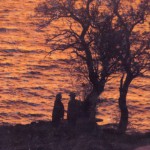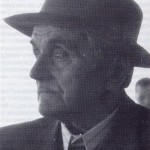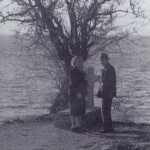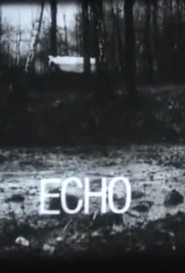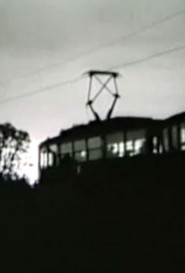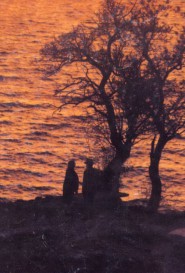
THE LOVE OF KOCO TOPENCAROV
The poetical in the documentary
In lack of a better continuity of feature films, the Macedonian cinematography has developed its own tradition for short, documentary and animated films, and has achieved results which, in accordance with the expectations from a small and undeveloped cinematography, are concentrated on just a few author names. Nevertheless, the Macedonian cinematography has had an equal participation in the Yugoslavian documentary and short film. In the seventies and little less in the eighties, the productions made by Vardar Film were winning awards on the Belgrade Mart festival and on the festivals in Berlin and Oberhausen. Looking in retrospective, there was a solid production of non feature films in Macedonia, whose importance was even bigger because that production was filling up the space in the Macedonian cinematography.
Currently the Macedonian cinematography is going through a period of shortage for new directors of documentary and short films. And in this climate appeared, Antonio Mitrikeski. He finished film school in Lodz, Poland. There he was able to do a couple of films of different genre. But the film “The Love of Koco Topinacarov” is his first complete work in which the idea, the screenplay and the directing are his own.
“The Love of Koco Topinacarov” as the title says, is a love story. And Mitrikeski with his stile emphasizes that he is talking about a big love, about love on first site, which has given the protagonist a great power, however, a power not big enough to be able to demolish certain barriers. This is a story about love that has won over the life’s incidents, but which has at the end still paid the price to the cruel reality of life.
Topencharov is Macedonian from Ohrid, who one night, forty years ago in Bitola, meets Marika and immediately falls in love with her. Marika leaves for Albania. They write to each other. After some time the borders close. She writes to him: “Koco, I‘m not a bird to fly above the lake and come to you.” And Koco decides. One restless night he secretly takes a boat and after a six hours fight with the storm he arrives across the lake, in Albania. There, the Abanian authorities don’t trust him that he had come to Albania because of love. He ends up in prison. After many years spent in jail, he unites with Marika. They have children. But Koco is nostalgic for his old country. When he asks for a permission to go back to his old country, he ends up in prison again, where he stays for seven years. His wish to return home comes through when he grows old, after he had gone through a long personal drama.
That is the basic plot for this story, the story that is fascinating with its details, its drama and energy. Every artist wants that kind of a story. The theme of love and politics are the most used themes in the film production.But what makes this documentary different is the formal “twisting” that is done by the director.
He confidently refuses to show the structure of the story in its basic form. In his “poetics”, the material is only a starting point in the kinetic process of thinking which is realized through an emphasized subjective expression.
The story in Antonio’s film starts from the end – from the moment when Koco, after many long years of waiting, returns to his motherland. In a long scene, we see the emotional expression on the face of this, now old man. The reappearance of this scene through the film fills up the crucial spaces in the mosaic of the representation of the idea. The story is not told by the sequentially presented events. The remembering of Koco, Marika, their friends and their son don’t have a purpose to show the biographical elements in a clear and explicit form, but they exist like a motivated memories of what had happened. They are re-ordering, re-opening the human soul. That re-opening is skillfully presented in just a few moments. The first moment is the sequence where in a slow motion, Koco and Marika are walking by the church of Caneo, they are looking toward Albania. It’s sunset. The second sequence is atthe border with Albania, where the arrival of Koco and Marika is being followed. Their relatives are waiting for them. The technic of this scene is black and white with separately recorded sound. The third sequence is happeningon a balcony with a view of the lake, where Koco and Marika are talking about the past.
And the last sequence that rounds up the whole, is showing Koco’s meeting with his friend from his youth. The basic sequence of the events presented in this film has a descriptive purpose, to tell a part of a history. The remaining part of the film is reflective, which is a achieved by the editing, which intercepts the main sequences with short scenes that have associative purpose: a lake, a church, a door of an old house, a street, a black cat. In those scenes we can find the symbolical dimension of the film, and they present the basic emotions in the film. But the same scenes are also expressing components that have remained in the subconscious of the main characters and that have came out to the surface during the recalling of the past. The effective editing succeeds to accept the two presentation and their ambiguity. In this way, the metaphor becomes a leading principal in the structuring of the story. In this kind of a structure, the logical connections between the events and the characters is not required or expected.
All this shows that in the work of Mitrikeski, there is a tendency to provoke the borders and the limits of the documentary film, by introducing elements of a feature film. The capability for observation and meditation, the emphasizing of the subjective elements and the particular stile of this film are exceptional. The question is how much this kind of orientation and skillfulness of the author is going to evolve in the direction of the feature films. But that would ultimately be the form in which he could express himself the best, especially that we are talking about an esoterically conscious and creative author, who has what to say. Mitrikeski’s pure and visual reasoning presents a way for investigating the possibilities of the film.
Oh how un-hermetic are the boarders of the human countries…
How the many clouds float over then unpunished…
How much desert sand has spill out from country to country…
How many stone pebbles roll in far off lands…
Poetical Film Record
The reason for my entitling this short review of Mitrikeski’s short films as “Poetical Film Records” is very simple – the author with all his sensitivity and knowledge manages to so mold the bare facts of life that all luxury of the poetic essence reveals itself to the spectator. Fierce facts of life, with a subtle lead of the action, reach us filled with different sounds. The border is a horrible fact, and so are beauty, hopelessness and life on the edge. But, the author knows how to enliven the given fact and how to elevate it in the higher spheres of human sensation, to raise it beyond the common ground. What happens in the last frame of the film “Koco Topencarov’s love” Absolutely nothing. It is a long frame, a total one of a man and woman, as silhouettes on the shore of a huge watery surface, which somewhere there, in the distance is edged by a mountain range. A sunset which lasts… And it is in this very lasting that one can feel the whole energy of the silent speech- a protest against all borders in the world, but one can fell the ode to Love and to Hope, too … And nothing really happens. The Venezuelan poet Fernando Paz Castillo would say…” Beyond the night, the stars, and the silence”…
The film, uncompromisingly, is a quest of unity of the thought, the visual aspect and rhythm, and it is only the sensitivity of the author that could breathe fresh spirit and poetics into this coherence. And poetics is precisely that which the films of Mitrikeski impose upon us.
Mitrikeski digs ideas for his films from the eternal themes, from somewhere in between Life and Death, Love and Hope, in the eternity of Time and Space, There are common people with common relationship established among them, yet these “common” relationship re transformed into subtle strings of the everlasting by the visual aspect and by the stillness or movement of the camera. The vivacious camera which follows the children’s play in the somnambulic Weideian forest scenery in “Echo” suddenly stops at the place where the child and the grandfather meet. Then, wide open eyes, a tender smile, old man s hands, and –we recognize the beautiful accord of these two human beings, in the film “ Echo”. The carriage in “The Duel”, as specific herald of Love and Death, weavers its gentle net or relationships, around the girl at the lit window, and the two men. Fragments of Koco Topencarov’s wrinkled face, the flooded paved road and the old house porch, are only reminiscence of the time, which though passes inevitably, is helpless too, when sometimes faced with great affections. The visualized sights, which are very simple, without any grand pretensions or moves, are packed with emotions aroused by the artistic composition of the frame, in which the camera, while still or in action, recoups the hidden trails of the space, the time and people. Even the old tram on its last journey, causes a feeling of sadness in the spectator-m there is only a mashed photograph, a lonely holder in the black – and – white picture and much water – everything is an end in itself, yet everything is eternal.
On this occasion, we must not leave out one more fact-and that is the superb artistic culture, which the author overtly possesses, and which enables him to use the color, as a relevant factor to dramaturgy, in the best manner possible ( for instance, the costume of the girl in “ Duel” at the end of the film).
On reviewing the early films of Mitrikeski, as well as the documentary “Koco Topencarow’s love” we find our original impression once again confirmed, and naturally our awareness of the authors capability to use the film writing with great skill, by directing his attention towards the basic elements of that particular language, such as the composition of the frame, the movement of camera and the montage, crystallizes even more.
Ilindenka Petruseva
THE LOVE OF KOCO TOPENCAROV - 1991
A documentary film
Script and director
Antonio Mitrikeski
Camera
Rafael Marciano
Edited by
Alekso Boneski
35 mm, color, 15 min.
A story of love as the only hope of a lonely man in the cruel world
1991 Award: Golden Medal at the Short Film Festival in Belgrade


